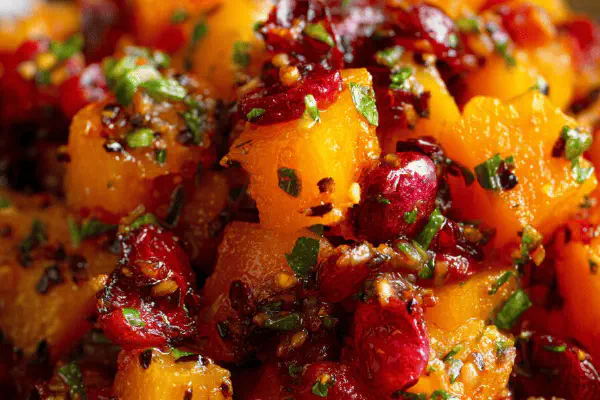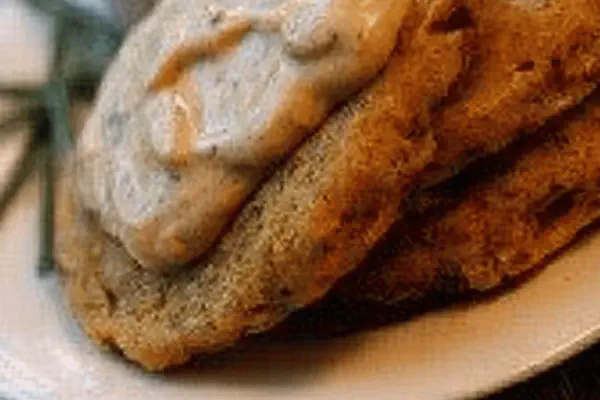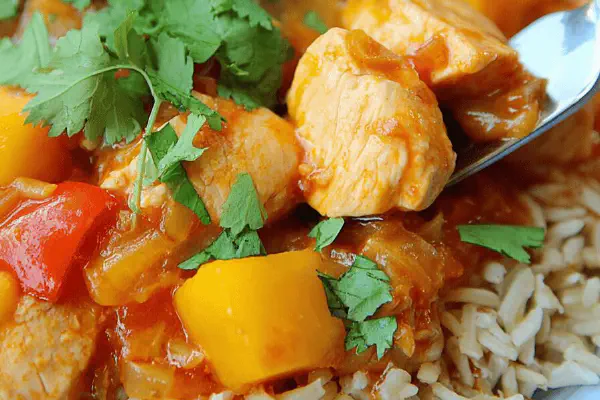Persimmon Ginger Chutney

By Emma
Certified Culinary Professional
Ingredients
- 80 g (1/3 cup) sugar
- 80 ml (1/3 cup) water
- 25 ml (1 1/2 tbsp) apple cider vinegar
- 25 ml (1 1/2 tbsp) balsamic vinegar
- 3 ml (just over 1/2 tsp) salt
- 1 ml (1/4 tsp) Espelette pepper
- 1/2 cup fresh cranberries
- 1 small piece ginger (about 3 cm), finely chopped
- 1 small shallot, minced
- 400 g (about 3 small) non-astringent persimmons, diced
About the ingredients
Method
- Gather sugar water and vinegars with salt, Espelette, cranberries, ginger, and shallot. In a small pot, bring mixture to a boil.
- Simmer gently for 7 minutes until liquid reduces to a syrupy texture, cranberries softening fully.
- Add persimmons, stir well, and continue cooking for 7 minutes longer on medium heat, breaking down persimmons slightly.
- Ladle chutney into sterilized jars while still hot. Let cool uncovered at room temp, then seal and refrigerate minimum 3 hours before use.
- Chutney keeps refrigerated for 4 weeks or can be canned in sterilized jars for up to a year at room temperature.
- Serve cold alongside cheeses or charcuterie or warm with poultry or meat pâtés.
Cooking tips
Chef's notes
- 💡 Start by finely mincing ginger and shallot. Smaller pieces melt into sauce better. Avoid large chunks unless texture desired. Keep cranberries whole for bursts of tartness but watch for popping skins. Use soft, ripe persimmons but not mushy. Dice uniform sizes to cook evenly. Water amount controls syrup thickness. Adjust as you go. Simmer with lid off for faster reduction. Watch closely to prevent scorching at bottom. Keep stirring semi-regularly but gentle.
- 💡 Balance the vinegars carefully. Apple cider brings sharpness, balsamic adds round fruitiness. Use measured amounts; too much messes with tang and sweetness. Salt adds depth, Espelette pepper gives subtle heat—add little at first, increase if needed. Cinnamon optional but adds warmth—don’t overpower the fresh flavors. Cook cranberries until soft but not dissolved. That bright color fleck is key to visual appeal. Final simmer temp medium—not too high to avoid burning sugar.
- 💡 Sterilize jars thoroughly before filling. Fill while chutney hot to create vacuum seal when cooled. Leave uncovered on counter to avoid condensation inside lid; locks in freshness better. Chill minimum 3 hours before opening for flavors to settle. Refrigerate up to 4 weeks. For longer storage, can in sterilized jars using water bath. Do not skip lint-free clean cloth drying on lids post fill. Double check lid seals after cooling. Reheat gently before serving warm—watch thickness, add splash water if too firm.
- 💡 Adjust sweetness by tweaking sugar amount or using less water to concentrate during simmer. Cranberries give sharp contrast to mild persimmon—do not skip. Ginger and shallot diced small release flavor slowly. Stir carefully after adding persimmons; breaking fruit down slightly but keep some pieces intact. Avoid overcooking persimmons or chutney turns too runny and loses texture. Espelette pepper level impact mild to medium heat—adjust to taste. Cinnamon is background note only. Serve cold or warm with charcuterie, poultry, or cheese spreads.
- 💡 Don’t rush reduction phase. Overcooked sugar leads to burnt notes, undercooked means watery chutney. Use small pot for better control. Taste mid-cook to balance acidity and sweetness. If too tart, pinch extra sugar; if too sweet, splash more vinegar. Cool chutney uncovered briefly for steam escape, preventing wet lids. Keep jars airtight after sealing to avoid spoilage. Best flavors develop after minimum chill time but keep it flexible. Mix texture elements: soft persimmon, tart cranberry pops, subtle spice kick.
Common questions
How ripe should persimmons be?
Use soft but not mushy persimmons. Too firm won’t break down well. Too soft turns chutney into sauce. Medium ripe is best for texture balance. Diced evenly for consistent cooking.
Can I replace cranberries with another fruit?
Yes. Tart fruit options work—like green apple, rhubarb, or tart cherries. Adjust sugar and simmer times for different acidities. Cranberries unique color though. Keep acid-vinegar balance in mind when swapping.
What if chutney is too thick or thin?
Add water bit by bit if too thick after cooling. Simmer longer if too thin, evaporate more liquid slowly. Avoid overcooking persimmons during thickening. Stir often to prevent burning bottom.
How long can I store chutney?
Refrigerated lasts about 4 weeks. Canning extends shelf life up to a year in sterile sealed jars. Keep in cool, dark place if canned. After opening, refrigerate again. Watch for mold, discard if smell off or bubble.



